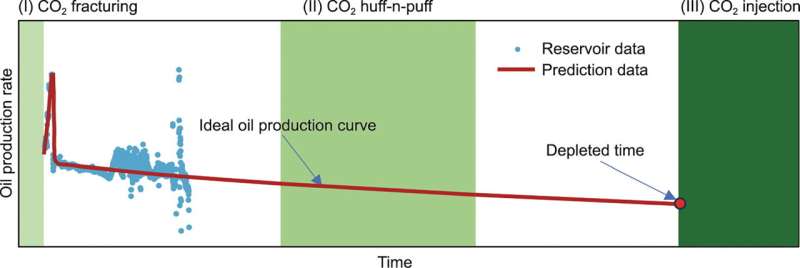
A new study published in the journal Engineering unveils the remarkable carbon storage potential of shale reservoirs utilizing CO2 fracturing technology.
Conducted by a collaborative team from the PetroChina Research Institute of Petroleum Exploration and Development (Beijing), the National Key Laboratory of Continental Shale Oil (Daqing), and China University of Petroleum (Beijing), the research signifies a pivotal advancement in China's pursuit of energy independence and carbon neutrality.
Shale reservoirs play a crucial role in China's energy landscape, and the utilization of CO2 fracturing offers a dual benefit: not only enhance oil recovery but also promote large amounts of CO2 storage. The study, titled "Carbon Storage Potential of Shale Reservoirs Based on CO2 Fracturing Technology," delves into the intricate dynamics of CO2 storage mechanisms within shale formations, utilizing real exploitation parameters from the GYYP1 well in the Songliao Basin.
Through sophisticated numerical simulations, the researchers uncovered the pivotal role of adsorption and diffusion in CO2 storage within shale reservoirs. Initial findings revealed that approximately 22.13% of CO2 was adsorbed during the fracturing process, with diffusion further augmenting CO2 interaction with the shale rock over time. This synergistic effect resulted in a remarkable 26.02% increase in CO2 adsorption, ensuring long-term and stable storage within the reservoir.
Key conclusions from the study demonstrate an impressive CO2 storage efficiency of 80.15% over a decade, showcasing the substantial potential of CO2 fracturing technology. Notably, the research highlights the concentration of absorbed CO2 around the horizontal well, underscoring the importance of diffusion in maximizing storage capabilities.
Moreover, extrapolations based on the GYYP1 well data project that approximately 1,000 future wells in Gulong shale oil reservoirs could harness similar storage potential, amounting to nearly 2 million tons of stored CO2 by 2030. Such achievements hold significant promise for advancing energy security and aligning with China's dual carbon goals of achieving a carbon peak and carbon neutrality.
This research sheds light on the immense potential of CO2 fracturing technology in not only enhancing oil recovery but also mitigating carbon emissions. By leveraging the natural storage capabilities of shale reservoirs, we can make substantial strides towards a more sustainable energy future.
This pioneering research underscores the importance of continued innovation in energy technologies and sets a compelling precedent for future developments in CO2 fracturing methodologies. As China intensifies efforts towards carbon neutrality, initiatives such as this play a pivotal role in shaping a greener and more sustainable future.
More information: Siwei Meng et al, Carbon Storage Potential of Shale Reservoirs Based on CO2 Fracturing Technology, Engineering (2024). DOI: 10.1016/j.eng.2023.11.018
Provided by Engineering Journal
Citation: Study demonstrates high CO₂ storage efficiency in shale reservoirs using fracturing technology (2024, April 18) retrieved 18 April 2024 from https://techxplore.com/news/2024-04-high-storage-efficiency-shale-reservoirs.html
This document is subject to copyright. Apart from any fair dealing for the purpose of private study or research, no part may be reproduced without the written permission. The content is provided for information purposes only.
